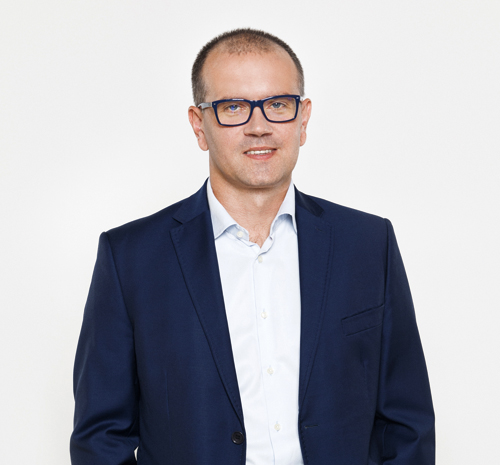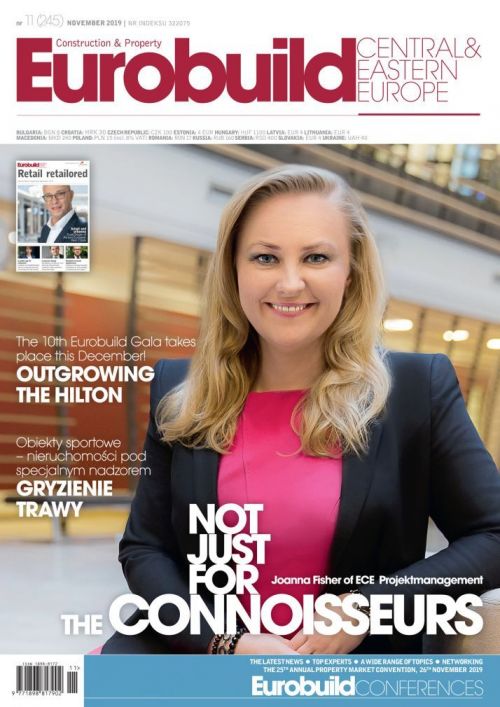Perfectly pitched
Property management
What is the essential defining feature of a sports facility in terms of its management? The administrators and managers of maintenance companies are unanimous about this: there isn’t one. Each is a unique hybrid, so they all require an individual approach and amenities tailored to their own character. Some sports complexes are intended only for occasional activity (matches or training); others are also used as venues for cultural events; and yet others have office or retail sections as permanent features. Then there’s the scale of the building – the size of the stadium determines not only the type of services that should be provided in it but also the legal regulations the property is subject for the types of events held there. And one other factor that is always important for the administrator and service company is who the owner of the building is. Local authorities have different requirements (and operate according to different regulations) from a sports club or a state-owned company. But all such buildings do have one thing in common: it’s not the athletes and players who end up doing the most sweating in them.
All the different types
“Two service models are employed in large sports buildings: a comprehensive service (for daily operations and during events), and service that is provided only during the events. The form of the daily service chosen by the customer depends on the capacity of the venue, the number of its regular users such as the tenants of the retail units, the users of the administrative section and the users of the sports facilities. The service changes completely during a match or concert, when thousands more people appear on the premises,” explains Piotr Kalisz, the regional sales director of Impel Facility Services.
However, stadiums are not only about sports events or concerts – smaller private events are also increasingly popular. Even the complexes that have no office, conference or commercial space for rent make money from organising company events, stag nights or children’s parties. “This gives us an idea of the diversity of the expectations of the people who visit such a building. By comparison, the majority of office building users are permanent employees of the companies leasing the space, so providing the right conditions for the user and keeping the building functioning efficiently, is a rather standard and repetitive task compared to what’s required for sports facilities,” points out Kamil Krzymowski, the central region head of FBSerwis.
One room that is generally not taken under the wings of the administrators is the cell. Modern sports buildings now tend to have seclusion areas where security guards can isolate anyone who has been apprehended until the police arrive. Such rooms also need particular care – the cells must not only be perfectly functional but also secure. Another notable room you can find in large stadiums is the chapel, which is usually ecumenical and provided mostly for the employees of the office section, but some chapels have also been used for weddings. “Large sports arenas are often used as the venues of international conferences or summits, and the competition between them is fierce for these major events. During one conference we had to set up a prayer room for Muslims, and our technical staff had to be specially trained when they learned, for example, that shoes should be removed when entering such a room,” recalls Kamil Krzymowski.
“There’s a simple recipe for making the entire building work like clockwork: you have to care for it as if it were your own building,” insists Kamil Krzymowski of FBSerwis
Can’t get the staff
Another major challenge for facility managers of sports venues is when they need to increase the number of service personnel for a sports or cultural event. The staffing levels have to be increased for just a few days. “The professional and safe provision of the service requires trained employees to be working on-site in order to ensure the event proceeds smoothly as well as the safety of those attending it. So how do we do it? We co-operate with many experienced and highly trained people from every relevant field wherever we provide our services,” explains Piotr Kalisz. “If the need arises, we also have the ability to relocate employees from other regions for the duration of the event. One of the most spectacular examples of an event for which we had to significantly increase the number of staff was last year’s Climate Summit at the International Congress Centre in Katowice – the crew involved in maintaining and cleaning the building every day had to be expanded to several hundred people,” reveals the director of Impel.
When the building is handed over by the organisers of a given event, the technical service has to follow their requirements and orders, although they still have to perform their own duties, so such a situation can lead to potential conflict. “Well, sometimes this happens,” admits Kamil Krzymowski. “For example, access cards issued to service workers for the duration of the event are a typical source of problems. When we apply for ten cards and we get only two or three, we need to think carefully about which technician should have them,” says the central region head of FBSerwis.
However, a professional service company should adapt to the organiser’s expectations, which can on occasion be quite unusual. For example, during an Iron Maiden concert at the Wrocław Stadium, Impel was also responsible for the catering for the artists. Unfortunately, the company is unwilling to reveal what the musicians ate and drank.
Staffing problems are also having an impact on the service sector as a whole – the increase in the minimum wage, the 500+ family benefit and the full unemployment level have combined to create a situation in which each trusted service employee is worth their weight in gold. “The introduction of a new service employee for large stadium work is a long and complicated process that has to be divided into stages,” admits Kamil Krzymowski. “These types of buildings can have dozens of major staircases and endless corridors and rooms. Each new employee spends their first month of working in a large arena learning how to move around – eventually they shouldn’t get lost. They know how to move around the complex efficiently only after another four or five months. People who don’t like walking are not suited to this kind of work – a technician can walk as much as even 30 km. Unfortunately, our sector is also impacted by problems on the job market, so every change in the staff is a major challenge. Fortunately, the core crews in the buildings that are serviced by us are permanent,” insists the central region head of FBSerwis.
“Wherever possible, we support our employees with modern technology – this is becoming part of all our activities,” adds Piotr Kalisz of Impel. “It’s where all the global trends are heading and we are playing an active part in this. For maintaining cleanliness, we are testing intelligent hygienic material feeders in one of our buildings – when a tray is almost empty, it sends information to the smartphone of a service employee, who can then replace the missing materials. Because of this we don’t have to appoint an individual employee simply to check each container. We are also testing out large automated cleaning machines in selected buildings,” reveals Piotr Kalisz.
Let there be light
Cleaning robots and intelligent towel dispensers are among a few of the examples of the use of modern technology in sports facilities. “Providing the right lighting for a building during sporting events is a serious challenge. In the largest stadiums, modern lamps have to provide enough light for 4K television broadcasts; in other words, there can be no visible shadows behind the players,” says Kamil Krzymowski. “And replacing a light source dozens of metres above the pitch requires not only heavy equipment but also skilled staff, sometimes with almost acrobatic abilities,” insists the head of the central region at FBSerwis.
The greatest challenge for service employees are, of course, the sports events themselves and the emotions they generate in the fans, which sometimes manifest themselves in the form of broken and ripped out chairs in the stands and ditto with the sinks in the toilets.
The smoke produced by flares is also a problem. “Clouds of smoke clog the air filters, which are also used by the office workers. Each time this happens, the filters have to be replaced, which costs tens of thousands of złoty. And sports events tend to take place in two- or three-day intervals – and we sometimes have to perform quite extensive renovations in these periods in time for the next event,” reveals Kamil Krzymowski
Many systems or items of equipment for large sports facilities are designed and manufactured specifically for that particular building. This can also generate serious problems for the maintenance service: some elements may no longer available after the warranty period, while using substitutes can be quite risky – even in the best cases they are similar to the originals, but they are never identical.
Big headaches
Many problems with sports facilities simply result from their scale – the devices and installations are many in number and individual examples of them can be huge in themselves. And the more functions there are, the more devices. The basic statistics show that they break down more often and require more frequent servicing that takes longer. “Breakdowns very often occur in sports facilities – up to several hundred a month. And that’s not even counting the smaller ones that we repair immediately. In such a building you cannot stick strictly to the contract and do only what you were asked to do – it’s simply impossible to foresee and record all the events in the contract, and the entire building has to work like clockwork. However, there’s a simple recipe for this: you have to care for it as if it were your own building,” insists Kamil Krzymowski.





















































